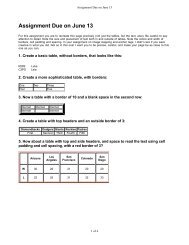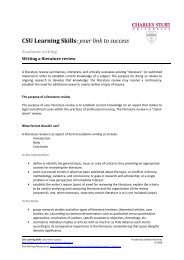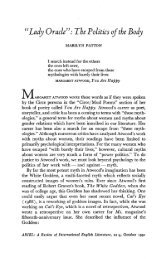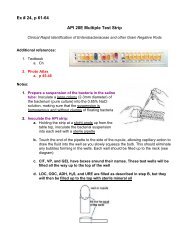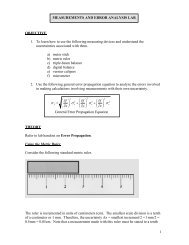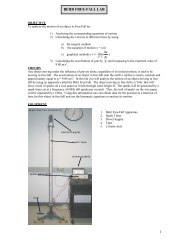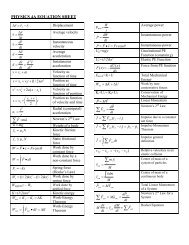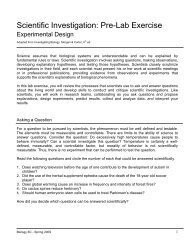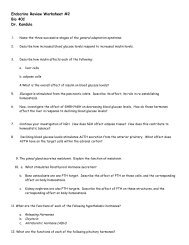Introduction to Chordates & Fish Anatomy - De Anza College
Introduction to Chordates & Fish Anatomy - De Anza College
Introduction to Chordates & Fish Anatomy - De Anza College
You also want an ePaper? Increase the reach of your titles
YUMPU automatically turns print PDFs into web optimized ePapers that Google loves.
Swim bladder. The swim bladder is a large light-colored structure near the dorsal side of the<br />
body cavity. Bony fish can adjust their buoyancy by putting gas in<strong>to</strong> the swim bladder. The most<br />
abundant gas in the swim bladder is oxygen, which comes from the blood. A specialized gas<br />
gland generates lactic acid, acidifying the blood in the gas gland and causing it <strong>to</strong> release its<br />
oxygen (remember the Bohr shift). This gland is accompanied by a specialized countercurrent <strong>to</strong><br />
maintain the incredibly strong gradient of oxygen partial pressure between the swim bladder and<br />
the blood. Some fish can have over 100 atmospheres of oxygen partial pressure in the swim<br />
bladder, but their blood can never contain more O 2 pressure than the surrounding water, which<br />
never contains more O 2 pressure than the air (0.2 atm).<br />
Kidney & urinary bladder. Does your fish live in salt water or in fresh water Either way it has<br />
a kidney, but the function of the kidney is quite different in these two environments. The kidney<br />
is long and thin and dark; it is located along the very <strong>to</strong>p of the body cavity. Urine produced by<br />
the kidney enters the urinary bladder, which exits in<strong>to</strong> the same area as the anus and the gonad.<br />
Gonad. Most fish are either male or female, though some change sexes. You should be able <strong>to</strong><br />
see either an ovary, which may be filled with large orange eggs, or a testis, filled with white<br />
sperm.<br />
Circula<strong>to</strong>ry system. Remember that fish pump their blood once per circuit. The heart is<br />
located close <strong>to</strong> the gills, and blood passes through the gills and then through the systemic<br />
circulation before making it back <strong>to</strong> the heart. You may have <strong>to</strong> do a little extra dissection <strong>to</strong> find<br />
the heart; it’s typically just behind and beneath the gills. Note the direct blood flow from heart <strong>to</strong><br />
gills.<br />
Other ana<strong>to</strong>mical features<br />
Muscle. <strong>Fish</strong> have a lot of muscle. If you peel away the skin, you can see the sections of muscle<br />
that are familiar <strong>to</strong> anyone who eats fish. The muscle of fish provides a very clear example of the<br />
segmented mesoderm that is characteristic of chordates. Also note the rays of the fins. Most<br />
fish can pull their fins flat <strong>to</strong> the body or extend them. The fins are extended by rays that<br />
penetrate down in<strong>to</strong> the fish’s muscle; the flexing muscle levers the rays in<strong>to</strong> an upright position.<br />
Eyes. If you’re good at dissecting small things, you may be able <strong>to</strong> sort out the ana<strong>to</strong>my of the<br />
eye. It’s a bit squishy, but you may be able <strong>to</strong> find some of the features shown below:<br />
Brian McCauley & Bruce Heyer 11/18/07 Page 10 of 13



